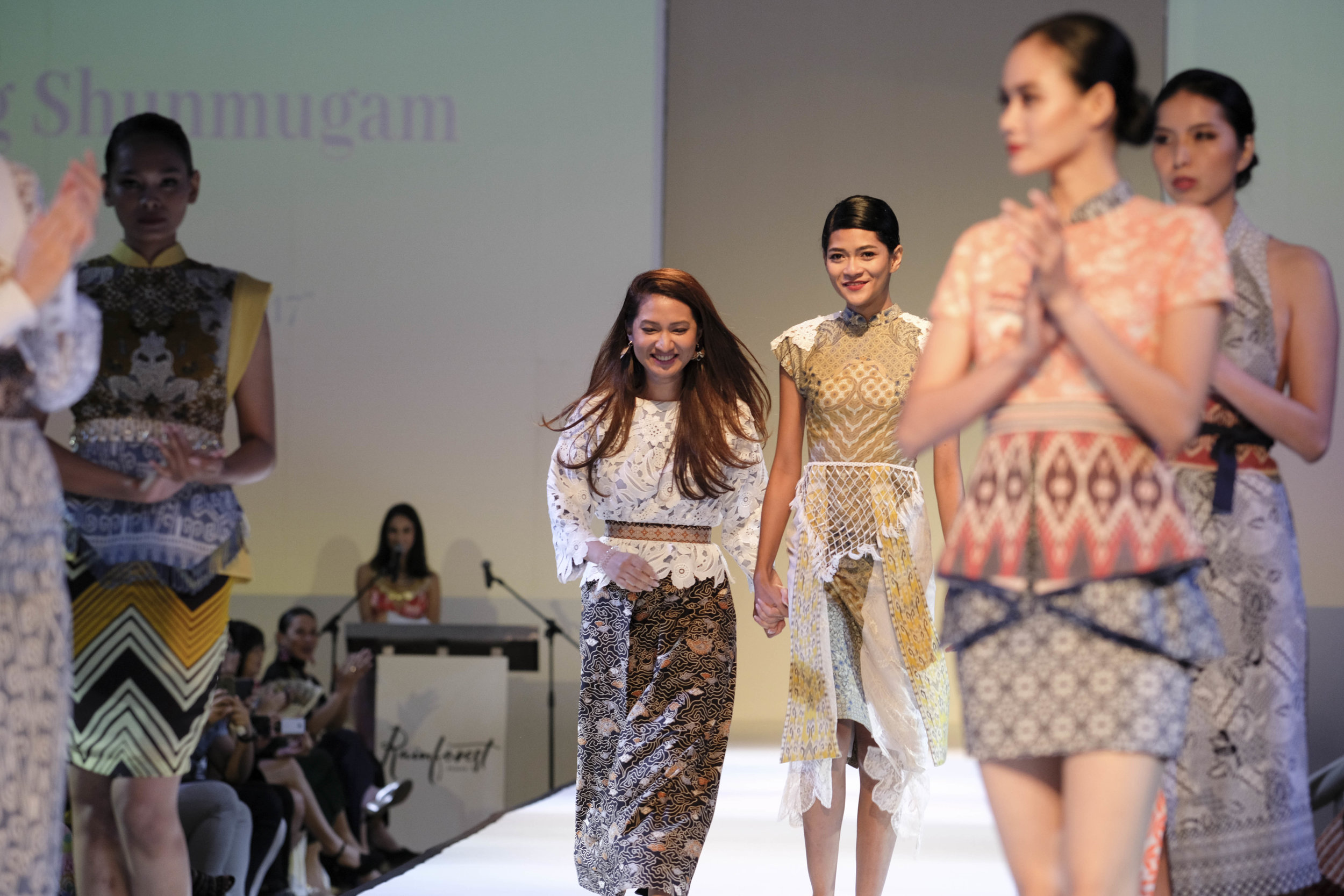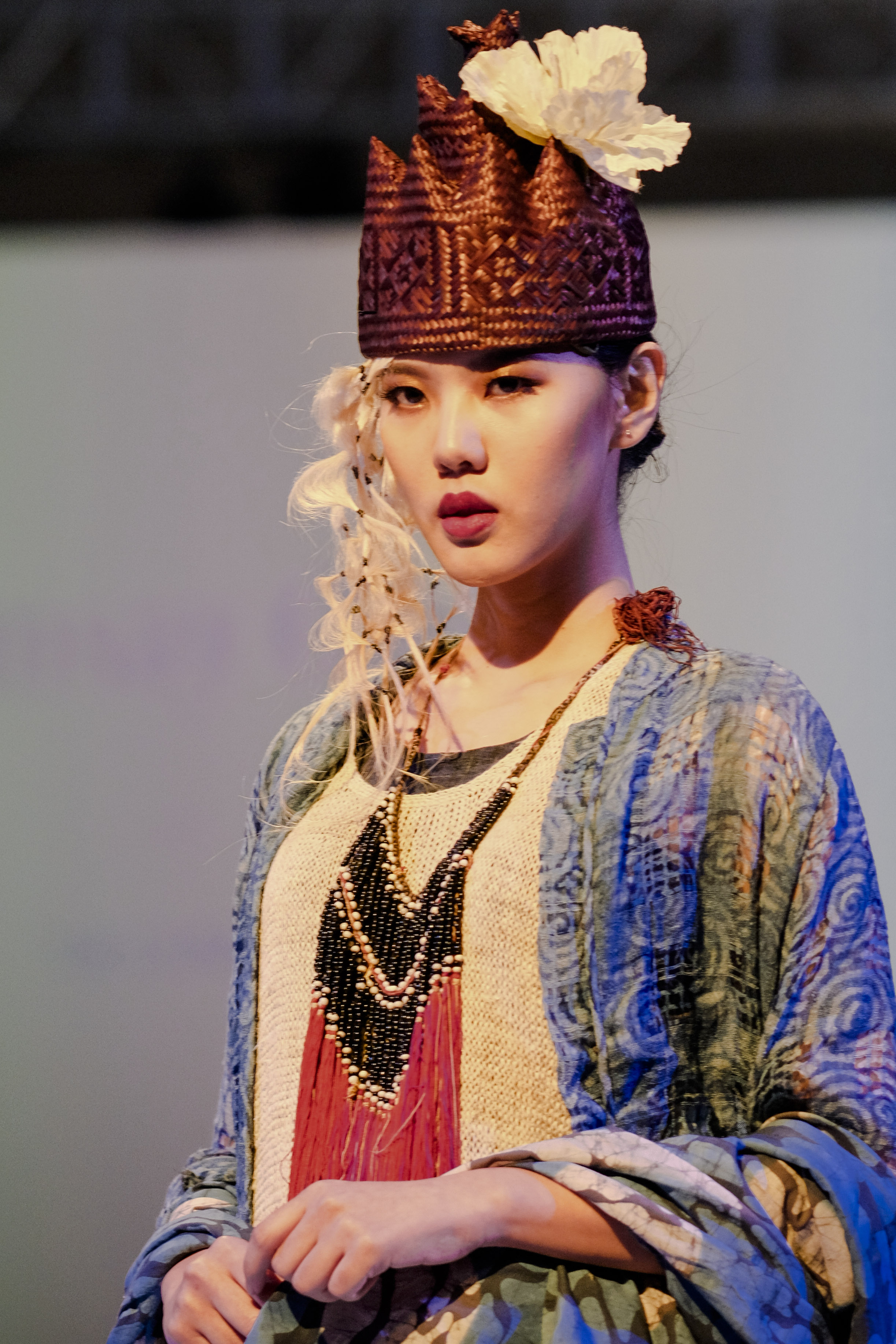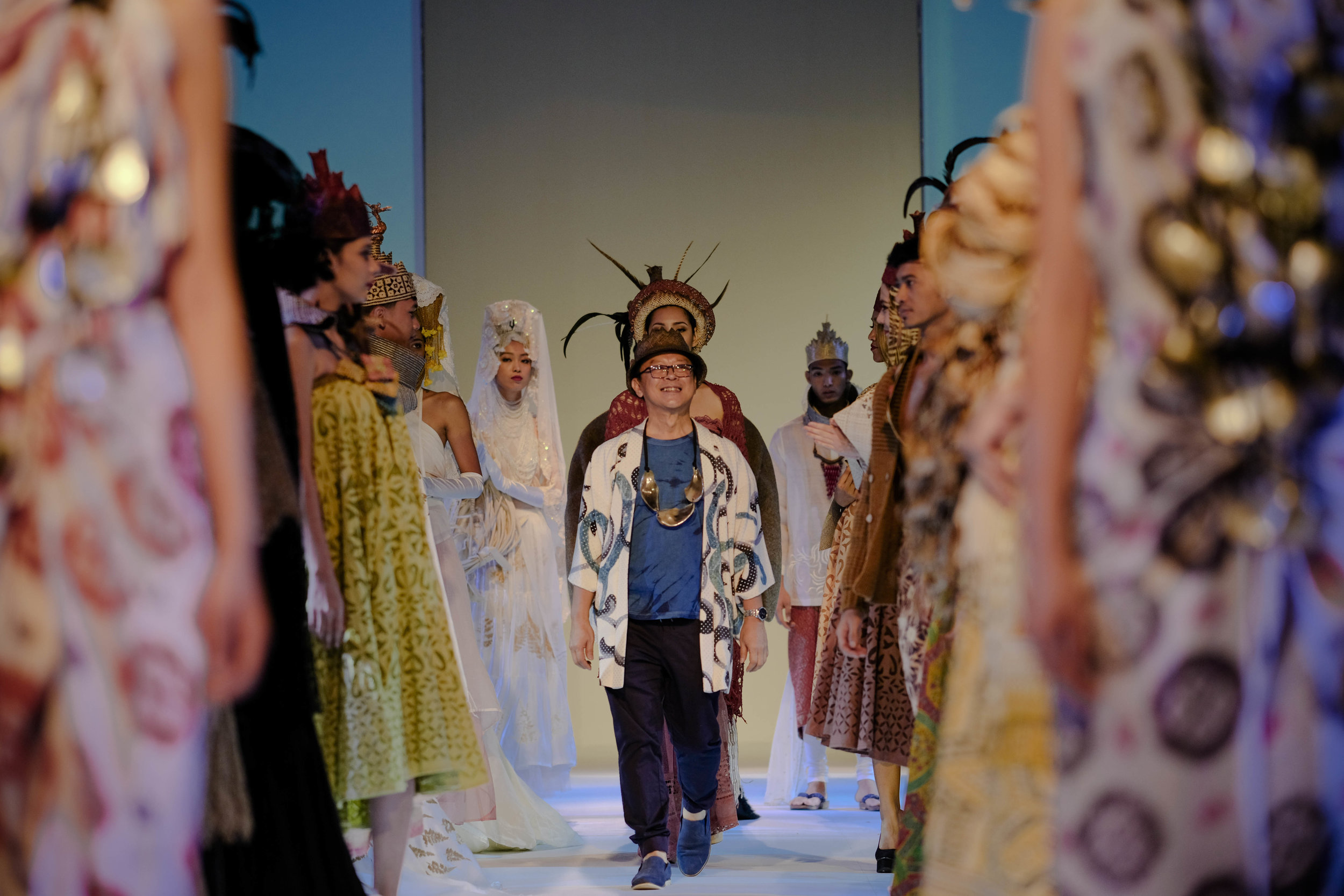FINDING HEART AT THE RAINFOREST FRINGE FESTIVAL
07 to 16 July 2017, Kuching, Sarawak
By Carolyn Oei, 16 July 2017
(Cover photo of Nading Rhapsody. Photo: Marc Nair)
Looking back on the inaugural Rainforest Fringe Festival (RFF2017), a sense of heart stole the limelight. This heart was evident in much of the 7 to 16 July programming for the festival, a precursor of sorts for the long-running Rainforest World Music Festival, which started on Friday 14 July.
If there were any initial fears of the festival being riddled with cultural appropriation, the participating artists and their various art forms on display – photography, traditional and pop music, crafts, visual arts and fashion – demonstrated a sense of balance and understanding.
Mackerel spoke with some of the artists and these are the ones who stood out.
CAPTURING WILDLIFE
“I don’t consider myself an artist. I’m a biologist by training and photography is a means of conveying information,” Chien Lee pointed out. Said like a true artist.
The wildlife photographer had on display a vibrant collection of photographs that not only gave insight to animal bio-diversity in the rainforests of Borneo, but also served as an indication of the sheer number of hours he’d spent in the jungle getting those shots.
“It’s always chance. Sometimes we’ll go out with a specific subject in mind – like this treeshrew taking a dump in the pitcher plant. But, in the process, you see other things. Still, it’s all chance; you never know what you’ll see.
“I could go for days and nothing. But, I take a two-hour walk and I come back with so many photos!”
Lee described the history of his shot of a clouded leopard, one that took two years to get.
“I’d been observing this cat for a while, but it was only two years later that I managed to get this photo.” Tracing the photograph on the wall with his finger, he continued, “Every two weeks, he passes this spot, walking in the same direction. I set up a camera trap triggered by an infrared sensor, which is how I got this. Then, two days later, an elephant came along and knocked the camera over! I was lucky to get the cat when I did!”
Lee’s photographs can be viewed on his website (see links section below).
Photographs aren’t the only reason why Lee spends so much time in the jungle; he also leads rainforest expeditions and this invariably strengthens the bond he has with the environment. Lee said that although a lot of destruction has already taken place, not all is lost. “There are secondary forests that have been partially logged, but if we can save these, it could go a long way to preserving our bio-diversity.”
Chien Lee's photograph courtesy of RFF2017.
HER PEOPLE'S MUSIC
When she was a teenager, Alena Murang decided to take up the sapeh, a wooden stringed instrument that resembles a very rectangular guitar.
The sapeh was traditionally the domain of Kenyah men, specifically shamans who played the instrument during healing rituals in pre-Christian times. But, traditional folk music and instruments have evolved since the arrival of Christianity to Borneo’s shores in the 19th century and more so in these contemporary times when many more indigenous Sarawakians embraced both Christianity and Western pop culture.
Murang, who is of Kelabit ethnicity, said, “Even in my dad’s generation, there weren’t too many young people who played the sapeh. His generation was the first to leave the jungle to get an education. And because they went to boarding schools, they spent very little time at home, which is where songs and traditions are learned. Arts and culture skipped a generation.”
For the last 15-plus years, Murang has been working hard to plug those cultural holes. In addition to the sapeh, she’s now taken up the lutong. Unlike the sapeh, the lutong is played sitting down because it’s that big. This makes it less popular with the younger folk.
“If more people take it up, it’s sure to evolve like the sapeh, with its guitar strings, metal tuning pegs and immovable frets. It’s an awareness thing.”
But even as indigenous music these days blends in so easily with dance tracks at a club, Murang voice and sound are more traditional. Her classical style came through during Sada Kamek: Music of Sarawak, a performance by Sarawakian musicians on 09 July at the Kuching Amphitheatre. It might be acceptable nowadays to play the sapeh like you would an electric guitar, but there certainly is a beauty about keeping with tradition.
Murang’s visual art pieces were also on display at the festival. Her pieces betray a deep connection with her people, a connection that resounds in all her projects such as Art 4 through which Murang uses her work that is rooted in her heritage as a medium for positive social change.
Alena Murang performs alongside veteran musician, Mathew Ngau, at Sada Kamek: Music of Sarawak, 08 July 2017, Kuching Amphitheatre. Photo: Marc Nair
Alena Murang's "The Storyteller" invites you to sit and ponder. Photo: Marc Nair.
WEAVERS AND ARTISANS
Positive social change was also the mission of the Pua Kumbu Community Project and artisans including the Penan Women Project and Left & Right.
The Pua Kumbu team, lead by Dr Welyne Jeffrey Jehom, a social anthropologist at the University of Malaya, put up an exhibition entitled, “Textile Tales of Pua Kumbu: The Sacred Journey” to showcase both the art of pua kumbu weaving as well as master weaver, Bangie Anak Embol. Fabric patterns and the art of weaving are steeped in folklore, but just as traditional musical instruments have evolved, so, too, the creation of pua kumbu.
Jehom explained, “Weaving methods have not changed, but beliefs have changed (because of Christianity). So, it’s important to go through the motions to keep up the traditions (behind the weaving).”
That mission seems more pressing now that there are only 75 people who are qualified to produce pua kumbu fabrics for sale. Reiterating its relevance in more modern times, pua kumbu fabrics made their way down the fashion gala runway in outfits designed by Singapore-based label, Ong Shunmugam.
The Penan Women’s Project also works towards keeping traditions alive. In addition, the project keeps members of this ethnic minority skilled, empowered and capable of earning a living. The group was quite possibly the most popular feature of the Craft and Vintage Market held on 8 and 9 July. Scores of women grabbed at the handwoven baskets, totes and clutch bags like they were going out of style. If murmurings are to be believed, these ladies were going to resell the bags in their boutiques at about three times the price. Regardless, a hundred per cent of proceeds from the market were going straight back to the weavers.
Also at the market was Left & Right, artisanal jewellers run by Fabian Tan and Eileen Phoan. Their handmade pieces are painstakingly designed and crafted, and they draw inspiration from sources such as their indigenous compatriots and Nature. Read more about them in an earlier Mackerel story here.
Master pua kumbu weaver, Bangie Anak Embol. Photo: Marc Nair
Already known for their wearable designs, the Ong Shunmugam Pua Kumbu 2017 collection looked like they’d fit perfectly at a Sunday brunch as well as a dress-up formal do. Photo: Marc Nair.
The fashion gala was attended by the who's-who of Kuching and featured designers and labels including Edric Ong (second row middle), Tanoti, Ramsay Ong and Dato Tom Abang Saufi. Photos: Marc Nair.
Left: A bag weaver from the Penan Women Project. Right: Left & Right pieces on display at the Craft and Vintage Market. Photos: Marc Nair
MORE THAN JUST INK DEEP
A special treat for guests at the fashion gala held on 8 July was the bold parade of indigenous tattoos, modelled by people who proudly wore their tattoos on their necks, shoulders, torsos, backs arms and legs. One of the parade was Peter John Jaban, a member of the Iban community, an activist and one of the voices of Radio Free Sarawak, an independent radio station that brings news to the remotest corners of the Borneo jungles. Unfortunately for this segment of the fashion gala, whilst the aesthetics of the artwork were apparent enough, there was a great deal of cultural significance that wasn’t adequately explained.
At its most fundamental, RFF2017 was a presentation of Sarawak’s diversity through art and the hope is that it will continue to deepen the world’s appreciation of this delicate and fragile diversity for years to come.
Peter John Jaban. Photo: Marc Nair.
A presentation of indigenous tattoos at the Sarawak: Theatre of Clothes fashion gala. 08 July 2017, Rainforest Fringe Festival, Kuching, Sarawak. Video: Marc Nair.
















